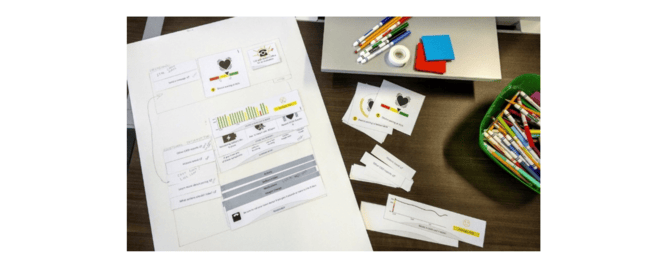Enhancing Patient Engagement for Heart Failure Care Through UCD

Methodology
- Focus groups
- Group participatory design session
- Usability studies
- Pilot trial
- Qualitative and quantitative analysis
Problem Space
Imagine you are a patient with congestive heart failure (CHF) and you receive an implantable medical device that paces your heart and delivers shocks when needed. After surgery, you are given a bedside monitor that is already set up—you plug it in at home. This monitor sends data from your device to a server and to your clinicians. Every three months, you receive a letter saying everything is normal, and if something is wrong, the clinic calls you.
Clinicians are hesitant to share this data directly with patients. They worry that patients may not understand it, which could create anxiety and lead to more calls to the clinic.
Research Question
How can we provide this information to patients in a way that engages them in their healthcare without overwhelming them?
My Approach
I used a mix of methods, including focus groups, a group participatory design session, and usability studies, to co-create an early dashboard where patients could view their device data through the patient health record system. I then ran a 6-month pilot trial to track the impact.
Impact
- Empowered patients to engage with their health information and take timely action
- Helped patients collaborate more effectively with their providers
- Informed the product roadmap for the BIOTRONIK Patient App
My Responsibilities
- Led research activities: developing protocols, managing logistics, creating recruitment screeners, drafting scripts, moderating sessions, analyzing qualitative and quantitative data, and publishing findings
- Collaborated with a cross-functional team of a UX designer, health informatics researcher, project manager, cardiac nurse, and cardiologist